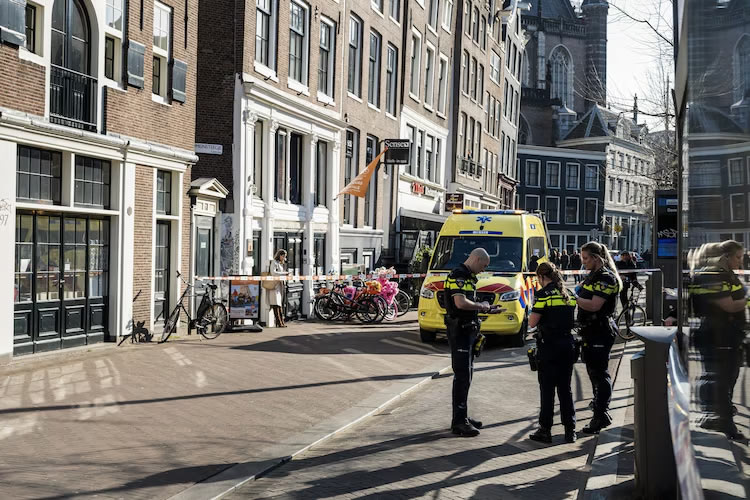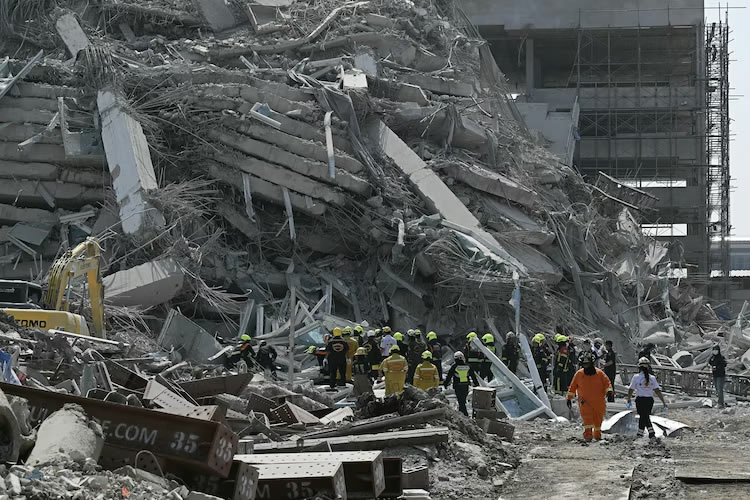In this March 24, 2020, file photo, a man sits outside a closed wholesale market in Mumbai, India. The International Monetary Fund has sharply lowered its forecast for global growth this year because it envisions far more severe economic damage from the coronavirus than it did just two months ago.AP PHOTO/RAJANISH KAKADE, FILE
GLOBAL ECONOMIC GROWTH will decline nearly 5% this year, International Monetary Fund officials announced on Wednesday, a much grimmer forecast than their last projections in April as the coronavirus pandemic triggers the world’s worst recession since the Great Depression.
The IMF’s latest dire World Economic Outlook update is nearly 2 percentage points worse than its last forecast in April, representing a slower-than-expected global recovery. The organization also downgraded its 2021 growth projections from 5.8% to 5.4%, which would leave global gross domestic product next year about 6.5 percentage points lower than pre-pandemic projections from January.
“We are definitely not out of the woods,” IMF chief economist Gita Gopinath said at a news conference. “We have not escaped the great lockdown.”
10 Most Economically Stable Countries, Ranked by Perception

Gopinath said the crisis has had an “unprecedented global sweep.” Real GDP growth is projected to decline 8% for advanced economies in 2020, while emerging market and developing economies could see a 5% decline – nearly 3% worse than the IMF forecasted in April. Contact-intensive economic sectors such as tourism “remain depressed” and trade is expected to collapse by 12%, according to Gopinath. Public debt will also exceed a post-World War II peak, according to data shared during the news conference.
Gopinath, who also is the organization’s research department director, said the downgrade from April reflects the possibility that social distancing restrictions will persist for a longer period of time, as COVID-19 cases continue to rise in some areas. While several countries have started to recover, she said, the “strength of this recovery is highly uncertain.”
READ:
Coronavirus Outbreak Throws Future of Global Trade Into Question ]
The road to recovery might indeed be long and slow. Researchers at Brown University and Harvard University found recently that low-income consumers in the U.S. are now spending nearly as much money as they were before the COVID-19 pandemic, but high-income spending is down 13% compared to January. Spending by middle-income consumers is down nearly 8%.
China is one country that is faring better than others. The IMF projects real GDP to grow 1% in the country this year, which is a slight downgrade from the 1.2% forecast in April. But Gopinath said there are “many other things that China could be involved in” when it comes to global recovery, adding that it will be important for both China and the United States to not escalate trade tensions.
Gopinath said “extraordinary policy support” such as income assistance will be required to aid recovery, and governments will eventually need to encourage people to return to work. While the IMF’s latest outlook is grim, she added that a “high degree of uncertainty” also surrounds it.
“On the one hand, you could get positive news, you could have better news on vaccines and on treatments and greater policy support, and that can trigger a faster recovery,” Gopinath said. “But on the other hand, there are important downside risks, too, which is that the virus could come back up. You could have financial tightening that could lead to debt distress. So there are both upsides and downsides.”














+ There are no comments
Add yours